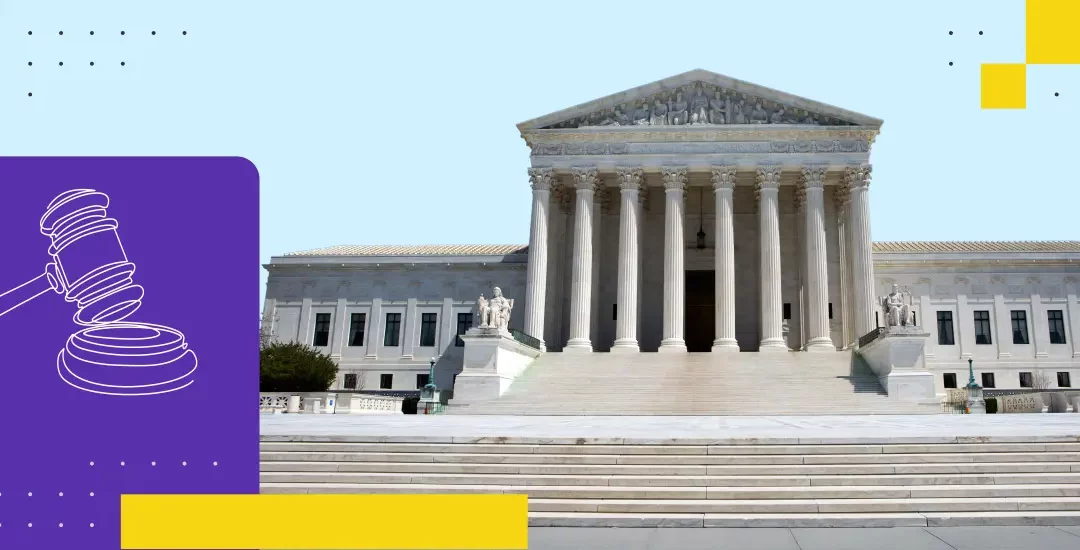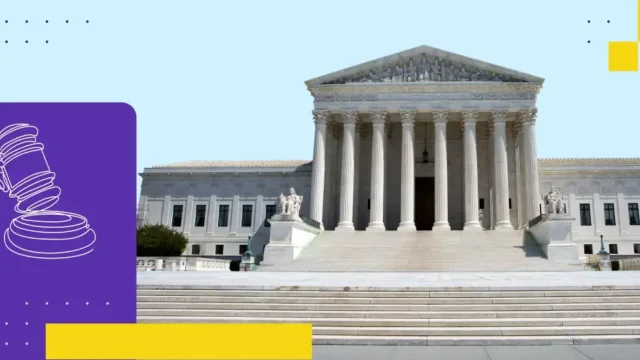
The Biggest Financial Fraud Cases and Ponzi Schemes in History
Here’s a look back at some of the most famous financial fraud cases in history.
In the wake of the recent multi-billion dollar collapse of cryptocurrency exchange FTX, corporate fraud has been in the spotlight. FTX’s collapse in early November 2022 caught many observers by surprise, but it shouldn’t have. History has shown that when there’s money to be made and financial controls are lacking or compromised, company founders and senior executives are often willing to bend the rules to maximize their returns to the detriment of investors, employees and suppliers.
Even if all the charges against FTX and its corporate leaders are proven in court, it won’t be the largest financial fraud case in history, and it certainly won’t be the last. A recent study of corporate fraud estimated that 41 percent of public companies are committing accounting violations and around 10 percent are committing securities fraud – both frighteningly high numbers.
Here’s a look back at some of the most famous financial fraud cases in history, the fallout they caused, and how the firms involved were able to get away with their financial deception for years and, in some instances, decades. While accountants and auditors participated in some of the financial deceits, in others they acted as the first line of defense, exposing corporate wrongdoing and in one case even being named a Time magazine Person of the Year.
Charles Ponzi
Charles Ponzi’s fraud wasn’t one of history’s largest, but it became one of the most imitated and famous over the following decades. Ponzi’s scheme was simple. He promised investors in his fund a steady stream of high returns and then used the money from new investors to pay the returns of existing investors.
After setting up an import business in Boston in 1919, Ponzi, an Italian immigrant, found he could make a profit by buying and selling international reply coupons – a voucher that could be exchanged in multiple countries for local postage stamps. By taking advantage of differing local exchange rates, Ponzi was able to buy the vouchers in one country, then exchange them in another for a small profit.
Ponzi created a company and sold stock to investors, promising an incredible 50 percent interest on the initial investment after just 90 days, supposedly based on the profits to be made from the voucher arbitrage. In reality, the interest was funded by new investors. In the first eight months of 1920, Ponzi collected US$15 million – equivalent to about US$260 million today – from approximately 30,000 investors.
A negative story based on an investigation by the Boston Globe newspaper led Ponzi to stop accepting new investments. Naturally, the story also led existing investors to demand their money back. Ponzi was unable to pay his investors, was eventually convicted of mail fraud and served time in prison before being deported to Italy. Ponzi’s scheme was short-lived, but its simplicity and effectiveness has resulted in many imitators, even to this day.
Bernie Madoff
Bernie Madoff took Ponzi’s blueprint to an entirely new level during the 1990s and into the early 2000s, building one of history’s most famous Ponzi schemes. Unlike Ponzi, Madoff was already well-known before he began his fraud. He was a respected pioneer in electronic trading and a former chair of the Nasdaq Exchange.
In the 1990s, and possibly earlier, Madoff began attracting investors by offering them consistently high returns that were supposedly the result of his investment expertise. In reality, existing investors were paid with the deposits of new backers. By the time Madoff’s scheme fell apart in 2008, he had amassed more than US$64 billion from tens of thousands of clients. Like Ponzi, Madoff’s scheme unraveled when his investors made too many redemption requests for him to pay back.
Over the years, multiple people had alerted the SEC that Madoff was up to no good. One of these was Harry Markopolos, a forensic accountant and financial fraud investigator, who worked for an investment management firm that competed with Madoff for clients. Markopolos was tasked with creating a financial product for his company that would mirror the performance of Madoff’s investments. After a thorough analysis of Madoff’s performance relative to the overall stock market, Markopolos reached the conclusion that Madoff could only be achieving his incredible returns through either insider trading or a Ponzi scheme.
Ultimately, Madoff, who died while incarcerated in 2021, was sentenced to 150 years in prison and forced to pay back US$170 billion. Several of his colleagues involved in his Ponzi scheme also received prison sentences.
Enron
Ponzi and Madoff were able to take advantage of their investors in part because they ran investment schemes with no audit controls in place. The Enron financial fraud, which began in the 1990s, was different because it occurred at a publicly traded company with audit controls. Experts cite Enron as the greatest audit failure in history. The company’s fraud case and subsequent bankruptcy also destroyed its accounting firm, Arthur Andersen, which had provided both internal and external auditing for Enron.
Founded in Houston in 1985, Enron was an energy company that also traded in the energy derivatives market. Enron’s derivatives contracts were tied to the price of various energy assets like electricity, gas and oil. For example, Enron would sell long-term electricity contracts at a fixed price, allowing the purchasers to lock in their energy costs. If electricity prices subsequently fell, Enron would make a profit on the contract; if they rose, Enron would take a loss.
Over the years, Enron inflated its earnings by billions of dollars by hiding massive debts in off-the-books subsidiaries known as special-purpose entities. The company also used mark-to-market accounting to inflate its revenue by recording not-yet-realized future gains as current revenue. So for instance, a sales contract would be recorded as revenue as soon as a deal was signed, rather than when the work was completed. Or the projected cash flows from a new electrical plant would be booked immediately as revenue. Mark-to-market allowed Enron to project optimistic revenues and asset valuations, which helped boost its stock price.
Enron’s shares hit an all-time high in 2000, but a recession later that year hurt Enron’s earnings and investments, battering the company’s share price. In February, 2001 Jeffrey Skilling replaced Enron founder Ken Lay as CEO, only to suddenly resign in August with Lay resuming CEO duties.
The day after Skilling’s resignation, Enron’s fraud was exposed after Sherron Watkins, a vice-president with the company, sent an anonymous letter to the company’s founder, Ken Lay, outlining Enron’s questionable accounting practices. An SEC probe soon followed and later that year, Enron filed for bankruptcy, which resulted in its investors losing approximately US$74 billion.
Several Enron executives, including Lay and Skilling, received jail sentences in the wake of the fraud and a former vice-chairman committed suicide after being subpoenaed to appear before two Congressional committees. Enron’s accountant, Arthur Anderson, itself a large multinational company and one of the “Big Five” global accounting firms, also collapsed in 2002, having lost most of its customers and employees as a result of the reputational damage the scandal caused.
Shortly after the Enron bankruptcy and several other large, corporate frauds during the early 2000s, the U.S. federal government passed the Sarbanes-Oxley Act (SOX), which requires public companies doing business in the U.S. to follow strict financial reporting standards designed to improve corporate governance.
WorldCom
The WorldCom financial fraud came on the heels of the Enron scandal and also contributed to the creation of SOX. WorldCom was a long-distance telecommunications and Internet provider, founded in 1983, that grew quickly by acquiring other telecom companies. In the late 1990s, in an effort to boost the company’s value, senior executives told the company’s accountants to begin booking some operating expenses as capital expenses instead. This allowed the expenses to be spread out over several years, inflating WorldCom’s short-term profits.
In 2002, WorldCom’s internal audit team heard about allegations from a former WorldCom accountant that the company was manipulating its books. The audit team investigated and uncovered billions of operating expenses that had been booked as capital expenses. WorldCom’s head of internal audit brought the issue to the company’s audit committee and an SEC investigation followed.
The SEC found WorldCom had overstated its assets by US$11 billion. The company reached a settlement with the SEC in 2003, but never recovered from the fraud. WorldCom filed for bankruptcy in 2006 and its assets were purchased by fellow telecom provider Verizon.
WorldCom’s former CEO, Bernard Ebbers, received a 25-year prison term and the company’s former CFO received a five-year jail sentence. Meanwhile, WorldCom’s head of internal audit, Cynthia Cooper, was named a 2002 Person of the Year by Time magazine, along with Enron whistleblower Sherron Watkins.
Wirecard
Wirecard, a relatively recent scandal, is the largest fraud case in German history, with the company owing creditors approximately US$4 billion. The firm filed for bankruptcy in 2020, shortly after disclosing around US$2.1 billion in cash had disappeared and could not be located.
Wirecard was a payment processor and financial services provider, founded in Munich in 1999. The company’s revenue grew quickly, fueled by acquisitions, resulting in Wirecard being valued at more than US$27 billion in 2018.
Over the years, shareholder groups and financial publications raised concerns about Wirecard’s balance sheet. The company defended itself aggressively against critics, going so far as to hire a former head of Libyan foreign intelligence to spy on journalists and short sellers.
But in 2019 the Financial Times published a series of investigative articles as well as complaints from a whistleblower and internal documents, culminating in Wirecard filing for bankruptcy and terminating its longtime CEO, Markus Braun.
Braun was subsequently arrested and charged with fraud, breach of trust and accounting manipulation. The case against him is ongoing. In the wake of Wirecard’s fraud, the company’s internal controls, external auditors, financial regulators and government bodies have all faced scrutiny.
Lehman Brothers
Lehman Brothers was never formally prosecuted for fraud, but the company’s 2008 bankruptcy, the largest corporate bankruptcy filing in history with US$619 billion in debt, helped precipitate the 2008 financial crisis and was caused in part by questionable accounting practices.
Founded in 1847, Lehman had grown to become the fourth-largest U.S. investment bank in the U.S. by 2008. But when the U.S. housing market bubble began collapsing in 2007, Lehman was caught unprepared, holding more than US$80 billion in risky, mortgage-backed securities.
To make its balance sheet look more stable than it really was, Lehman took advantage of a 2001 accounting loophole, called Repo 105, to move billions in risky assets off its balance sheet when reporting its quarterly results. Typically a repo agreement involves a company offering collateral in return for a short-term loan, with an agreement to repurchase the collateral assets at a slightly higher price at a later date. Instead of recording its repo transactions as loans, however, Lehman recorded them as sales.
Essentially, Lehman was removing the risky mortgage-backed securities from its balance sheet and replacing them with cash – but only when it had to report quarterly results. In Q4 2007, for example, Lehman moved approximately US$39 billion in securities from its balance sheet. This rose to US$49 billion in Q1 2008 and US$50 billion in Q2 2008.
Lehman’s use of the Repo 105 loophole came to light after the company collapsed under the weight of its mortgage-backed securities and declared bankruptcy. The Financial Accounting Standards Board closed the Repo 105 loophole in 2011.
Accountants and auditors as defenders of the public
Some of the most infamous frauds in history were committed because there were no audit controls in place. Ponzi and Madoff managed investment funds and weren’t required to have audits. In other instances, audit controls failed because the internal accountants and external auditors involved chose to look the other way.
But there are examples, including WorldCom, where auditors stepped in to prevent further fraudulent activity from occurring and protect investors.
As some of the cases above illustrate, accountants and auditors are protectors of investors and the public – a first line of defense providing assurance that financial statements are accurate and holding executives accountable for their decisions and actions. And increasingly, these professionals are being assisted in their efforts by advanced analytics technologies like Caseware IDEA that make it easier to detect and analyze cases of financial fraud.






